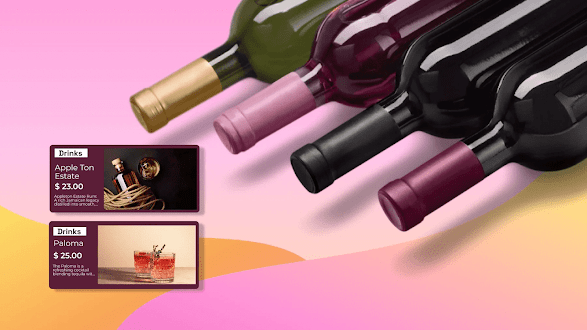What Are Well Drinks?
Understanding Well Drinks: What Sets Them Apart
Well drinks, often referred to as rail drinks, are a category of mixed beverages incorporating one or more affordable liquors along with specific soft drinks. This blog serves as your ultimate guide to well drinks, offering insights into their profitability and presenting an essential well drink list complete with recipes.
What Makes Well Drinks Distinct?
Well drinks are crafted using the bar's most economical liquors, commonly stored at the bartender's waist height in a designated area known as the speed rail. This rail, resembling a well, gave rise to the names "rail drink" or "well drink." These spirits, readily accessible, form the base for the majority of drinks served at the bar.
The well typically houses budget-friendly liquor varieties, including vodka, tequila, rum, gin, and whiskey. Additionally, it stocks non-alcoholic essentials like various juices, sodas, grenadine, and garnishes such as cherries, lemon, and lime wedges. The core liquors are whiskey, brandy, vodka, rum, gin, and tequila.
Popularity of Well Drinks in Bars
From classic rum and coke to trendy vodka sodas, well drinks remain perennial favorites in bars. Despite their seemingly simple nature, these primary liquors are the unsung heroes, consistently in high demand. They are quick to prepare, requiring minimal effort by bartenders and boasting high-profit margins.
The Profitable World of Well Drinks
While craft beers and elaborate cocktails grab attention, well drinks silently boast higher profit margins than any other item on a restaurant's menu. Their low food cost percentage, typically around 5%, results in remarkable profitability, outshining other beverages and dishes:
- Restaurants: 25% to 40% food cost
- Beer: 20% to 40% food cost
- Wine: 30% to 50% food cost
Well drinks, being quick to produce, allow bartenders to focus on high-volume sales, translating into impressive profit margins. However, regular pour tests are essential to prevent excessive pouring.
What Qualifies as a Well Drink?
A well drink is essentially a cocktail made with lower-cost liquor, often featuring three ingredients or fewer. It encompasses a combination of liquor, mixer, and optional fruit or garnish.
Maximizing the Well Drink List
To derive maximum advantage and profit from well drinks, consider these tips:
- Highlight Seasonal Flavors: Align the list with seasonal variations to keep it fresh and appealing.
- Offer Signature Dishes: Create a unique signature well drink that sets your establishment apart.
- Staff Education: Ensure bartenders are well-trained and knowledgeable about all offerings.
- Balanced List: Cater to diverse palates, offering options from sweet and fruity to potent, alcohol-based drinks.
- Menu Upgradation: Keep the list interesting by regularly adding new drinks and removing less popular ones.
FAQs
What is a well drink?
A well drink is made from house liquors, stored in a well or rack for easy access.
What is the well area of a bar?
The well is a storage area for commonly used, cheaper liquors.
Are well and rail drinks the same?
Yes, the terms are interchangeable.
What is a premium well drink?
Drinks made with top-shelf liquors upon specific customer requests.
What are the most ordered well drinks?
Common well drinks include vodka soda, Moscow mule, gin and tonic, and more.
Are well drinks profitable?
Extremely profitable, with a low food cost percentage of 5%.
Conclusion
Well drinks, often overlooked, serve as the workhorses of the bar, boasting high profitability. With a touch of creativity, these drinks can take center stage, providing a significant positive impact. Cheers to the impactful world of well drinks! For further assistance in restaurant website building and digital marketing, get in touch.




Comments
Post a Comment